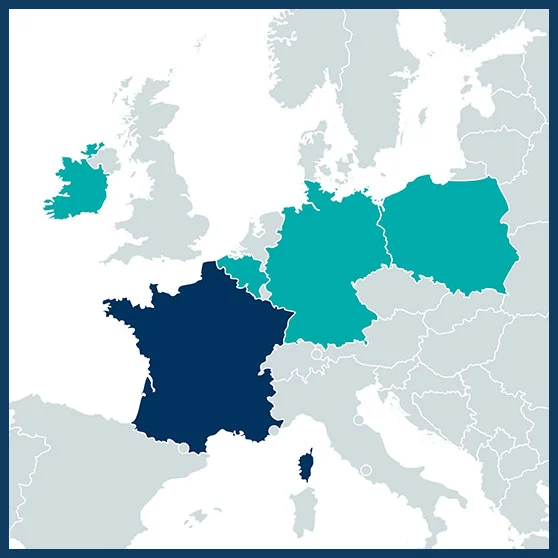01/03/2020 – 28/02/2023
€ 1,123,930
Dr. Nathalie Charbonnel
nathalie.charbonnel@inrae.fr
Coordinator: Biology Center for Population Management (CBGP) – INRAE/IRD/CIRAD/Montpellier SupAgro – Montferrier sur Lez – France
Department of Biology – University of Antwerpen – Antwerpen – Belgium
Infectious Diseases and Vectors (MIVEGEC) – IRD /Université de Montpellier/CNRS – Montpellier – France
Mountain Ecosystems and Societies (LESSEM), INRAE– Grenoble – France
Animal Ecology – University of Potsdam – Potsdam – Germany
Zoology building, School of Natural Sciences – Trinity College Dublin – Dublin – Ireland
Tropical Parasitology –Medical University of Gdansk – Gdynia – Poland

Major advances in the understanding of infectious diseases have been achieved these last decades. However, the persistence and re-emergence of pathogens continue to raise public and veterinary health concerns, of which the recent COVID-19 pandemic may be one of the most dramatic recent examples. The role of biological diversity alteration in such cases has received a lot of attention, primarily because of the concomitant occurrence of habitat alteration and biodiversity loss with pathogen transmission and emergence from wildlife. Yet, scientists do not exactly understand how biodiversity changes disease dynamics and emergence. Understanding the relationships between wildlife biodiversity and zoonotic infectious diseases in a changing climate is a challenging and major issue of worldwide concern that scientists must address to help guide policy actions and response.
BioRodDis aims at tackling this challenge by looking at rodent-borne diseases in European temperate forests and large urban green spaces. Rodents are important reservoirs of zoonotic agents; forests and green spaces are environments where rodents are abundant, and where human/domestic-wildlife interactions are likely to occur. The main objectives will be to develop four promising and original research streams to understand the relationship between biodiversity and zoonotic infectious diseases:
• the impact of co-infections on epidemiology;
• the interactions between gut microbiome and host susceptibility to infectious
agents;
• the influence of socio-economic contexts on human exposure to wildlife;
• the temporal variability of biodiversity/health relationships.
Overall, BioRodDis will provide proof-of-concept that joint strategies between public health and conservation biology programs can help to prevent emergence of zoonotic pathogens from wildlife including coronaviruses as needed.
BioRodDis will use rodent sampling and large survey of zoonotic agents and microbiome to establish an up-to-date, open database and maps of rodent-borne pathogens circulating in western-central European countries. Eco-epidemiological approaches will be applied to enhance our understanding of the processes that influence zoonotic pathogen transmission in rodent populations. Mathematical models will be developed to analyse the influence of spatiotemporal scales and within-host interactions on the relationships between biodiversity (rodents and microbiome) and zoonotic diseases. The impact of climate change scenarios on zoonotic disease risk and rodent-microbiome biodiversity will be evaluated. Lastly, zoonose prevention policies will be improved through (i) the dissemination of surveillance protocols that will be adapted to the different specific user groups (clinicians, identified risk groups, biodiversity conservation organisations); (ii) the training of the main stakeholders identified and (iii) awareness campaigns towards people at risks such as clinicians, biodiversity conservation organisations, ecology and environment departments of cities and national forestry offices.
In addition to advancing scientific knowledge, the project will rely on participation in conferences and an active use of social media. The project also involves sociologists to help partners develop effective knowledge exchanges and collaborations between scientists and stakeholders. A first circle will integrate collaborators from public health, biodiversity management and NGOs representing public at risk (e.g. Scouts) of rodent-borne zoonoses. These stakeholders will be strongly engaged throughout the project, as they will be informed, consulted and involved in project activities and dissemination (e.g. ecology departments of cities, national forestry office). A second, larger, circle will be engaged through knowledge exchanges, to guarantee that all organisations and public interested in, affected by rodent-borne diseases or involved in nature management can be informed.